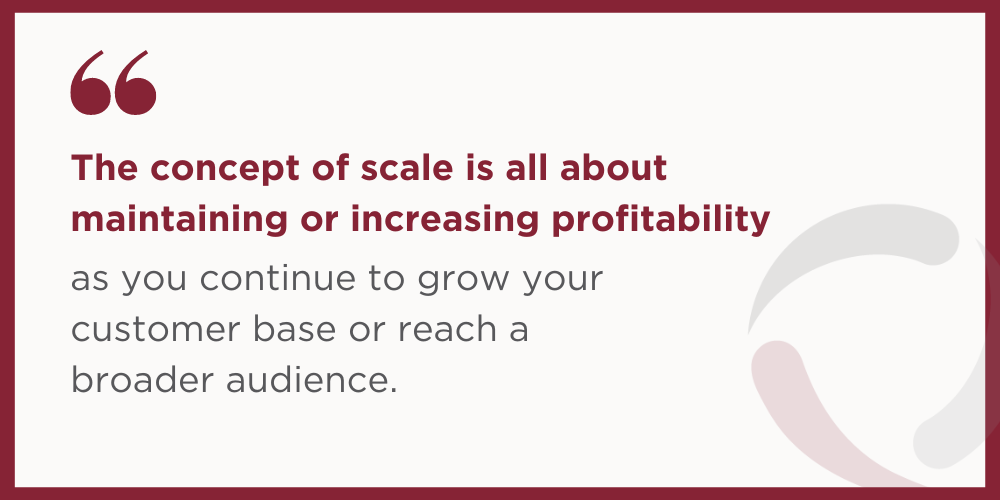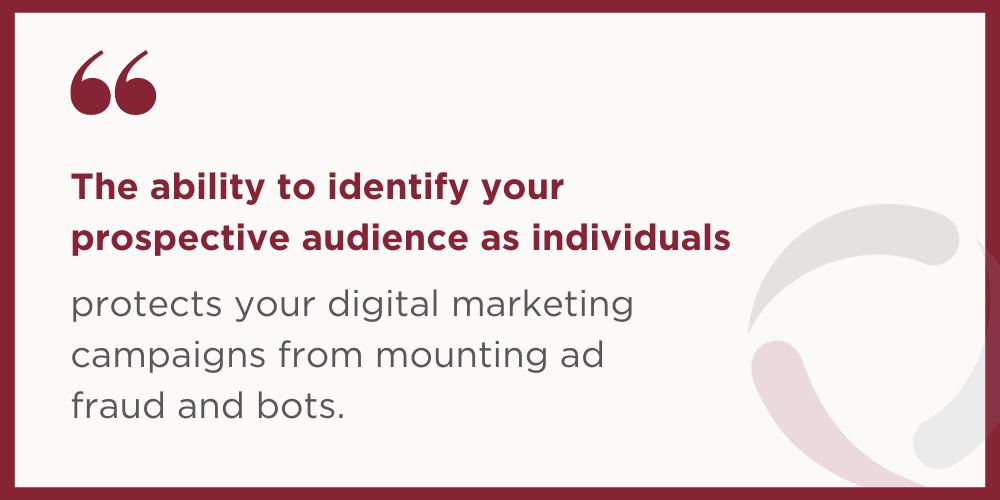Scale Up: Your Guide to a Scalable Marketing Strategy

In the fast-paced world of marketing, increasing your customer base is always a primary goal. However, what’s equally important is maintaining or improving your Return on Investment (ROI) during this growth process. This delicate balance is where marketing scalability comes into play.
A scalable marketing strategy allocates resources efficiently, uses data-driven insights, and can adapt and optimize marketing activities to maintain or improve results as business grows. The brands that are most successful at finding scale measure profitability with sustainable testing strategies and real data.
Here’s how they do it.
The difference between growth and scale
Before we dive into how to successfully scale your brand, let’s quickly define two key concepts that may be used interchangeably to define a successful company.
Growth happens as a brand builds revenue and concurrently, its costs. This can happen while adding resources such as personnel or locations, products or capabilities, and even clients.
Scale is when revenue increases without proportionally increasing costs. This concept is all about maintaining or increasing profitability as you continue to grow your customer base or reach a broader audience.
While a brand can experience growth as part of its scaling strategy, the two concepts are not quite synonymous.

Testing design and setup
Building a scalable marketing strategy is not without its challenges. The journey to scaling can sometimes negatively impact your ROI if not managed properly. Pouring budget into marketing channels without a clear testing strategy can result in flat results, diminishing returns, and a headache for your finance department.
The biggest challenge lies in your approach to testing, whether it is testing new data sources, creative elements, or channels. Direct marketers commonly utilize A/B testing or multivariate testing to optimize marketing campaigns, yet these two popular techniques have their downsides. When implemented correctly, the best testing strategies:
- Provide quick learnings
- Measure profitability
- Focus your resources on impactful variables
- Can be replicated for larger marketing spend
One example of a best-in-class direct marketing testing strategy utilizes fractional factorial design to build a testing matrix that provides performance reads across creative, offer and audience (the most impactful campaign elements) to quickly identify which combinations will provide the best performance. The top performing combinations are then the focus of follow-up validation tests and eventually, full-channel rollouts. This pillar testing strategy provides assurance that the “wins” will continue as you increase your marketing spend to efficiently scale the program to protect your ROI.
Datasets for prospect modeling and targeting
If testing is a pillar to building a scalable marketing strategy, data is the lifeblood.
Once successful testing validates your audience, you’ll want confidence that you can find more prospects that look like, and convert like, your winning audience. To scale your marketing campaign, you’ll need to build prospect models from outside datasets. There is a vast range of data sources available for use, but not all data is created equal. When choosing your data partner, prioritize quality data variables tied to real people for stronger prospect modeling and audience targeting.
Leading marketing data providers grant access to over 125MM households and 200MM consumers. These consumer insights span many dimensions of permissioned data including demographic, lifestyle, purchase behavior, marketing channel usage, social media engagement, and more. Arguably the richest of these data sources is offline transactional data. These datasets are tied to a consumer through unique identifiers, but offline transaction data is paired with a physical mailing address, making the over 125MM households and 200M consumers discussed earlier, identifiable.
The ability to identify your prospective audience as individuals protects your digital marketing campaigns from mounting ad fraud and bots – allowing you to effectively measure the success of your programs. With confidence in your campaign results and a quantifiable universe of quality prospects within reach, you can grow your customer base without wasteful spending.

Balancing growth and ROI
The ultimate goal of marketing scalability is to balance growth with ROI. It’s crucial to have strategies in place for maintaining or improving your returns as you expand your customer base. For many marketers, a scalable marketing strategy was found via online models and digital prospecting campaigns. Yet, the “signal loss” caused by data privacy regulations and browsers have left marketers blind to online audience behaviors and digital marketing campaign performance – while increasing customer acquisition costs.
SeQuel has cracked the code to scalability and profitable customer acquisition with ProspeQtor. First, we build models based on offline transactional data for accurate prospect targeting and acquisition campaign scale. Then, we leverage our proprietary FaQtor Test methodology to identify the best performing audiences, channels, and creative strategy. Using deterministic (not probabilistic) matching, we match offline audiences to individual consumers and their associated devices to ensure that every digital impression is a valuable one. And finally, our multi-faceted reporting includes PSA holdout lift and matchback sales to onboarded audiences lists to validate campaign results.
Faced with budget constraints that halted their direct mail efforts, a mobile bank service sought an affordable prospecting strategy to continue to target high-quality prospects and scale its program. SeQuel stepped in by proposing a digital campaign test leveraging the ProspeQtor technology. Through programmatic, open-web engagement, display and web-video assets were strategically delivered to 625,000 offline lookalike model records. To gauge incrementality, a subset of the audience was exposed to PSA advertising, while the majority received the branded version. The results were compelling: compared to the holdout population exposed solely to the PSA, the branded digital ads demonstrated significantly higher sales rates while attracting hundreds of new users. This case exemplifies the success of the ProspeQtor targeting approach in driving tangible outcomes for our client.
Next steps to a scalable marketing program
Marketing scalability is about more than just expanding your customer base – it’s about doing so efficiently. Pairing quick learnings with real data variables allows you to scale your programs while maintaining, or even improving, your returns.
Download our free ebook to learn more about Prospecting with Precision, then contact a SeQuel strategist to start scaling your direct marketing program today.

